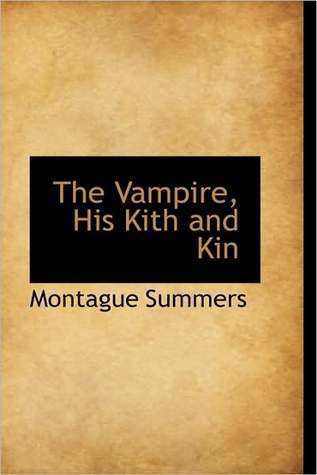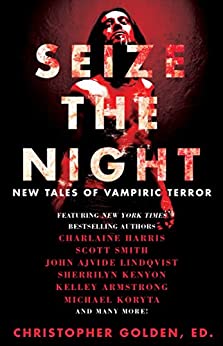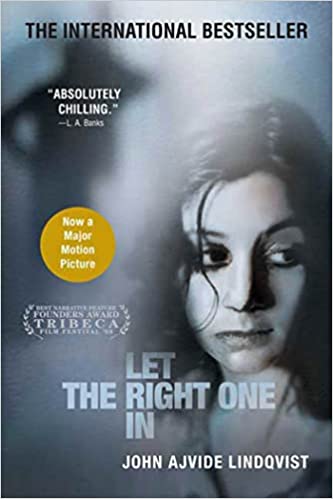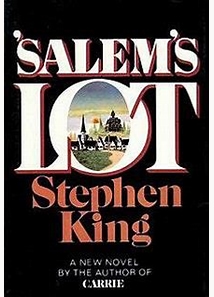Jacqueline Holland’s debut, The God of Endings, offers a reflective and poetic look at the nature of immortality. In the 1830s, Ana watches the rest of her village succumb to tuberculosis. Before the disease can take her, too, an older gentleman claiming to be her grandfather changes her into a vampire like himself. A century-and-a-half later, Ana has taken the name of Collette and travels to her grandfather’s country estate at his request, as he’s in need of a caretaker. She’s happy enough running a preschool out of his mansion—until her hunger grows suddenly insatiable and nightmares from her past reappear. Holland’s vampires lean philosophical, struggling with immense grief and loneliness, and her magical world is layered with mystery.
Anyone who writes a vampire novel, as I have, had better be prepared for lots of canny questions about the “rules” of vampirism. Can your vampires go out in daylight? Can they see their reflections in a mirror? How do they feel about garlic on their pizza? Vampire fans are a uniquely passionate bunch and are often experts on the tropes and “rules” of vampirism that they’ve gleaned from all the popular fiction. But what if I told you that vampires, across the world and through the centuries, have broken all the rules and taken forms you wouldn’t believe? Like, for instance, the vampires of the Caribbean, who were old women believed to detach their fanged heads at night to send them flying off in search of victims while their inert bodies rested hungrily at home? Or what about the long tradition of vampire mothers, women who died in childbirth and then came back from the grave to collect their children one by one?
Vampire terror is a long, rich, and surprisingly varied tradition that spans the globe and traverses both literature and history. If you want to take your vampire expertise to the next level and get a delightful case of the creeps at the same time, I’ve got seven books for you.

1. Vampires and Vampirism, The Vampire: His Kith and Kin, and The Vampire in Lore and Legend by Montague Summers
When I was researching vampires for The God of Endings, I came upon the works of Montague Summers, an author who himself possesses the aura of a creature of lore and legend. In the early 1900s, he was respected for his scholarship on the theatre, but he also went about dressed as a priest (despite having been denied ordination by church superiors due to his obsession with the occult) and left a trail of rumor and scandal in his wake.
Whatever you make of the man, his work researching and exhaustively cataloguing the creatures of our collective nightmares (he studied vampires, witches, and werewolves) is undeniably thorough and bewitching. His writing traces the earliest appearances of vampires in ancient civilizations like Babylonia and Assyria, analyzes their representation in literature, and reports with an unnerving journalistic deadpan the vampire rumors of far-flung villages. Strangely, I found that reading account after account of handed-down and allegedly eye-witness vampire encounters in the Balkans, for instance, disturbed my sleep more than any work of pure vampire fiction ever has.
2 Food for the Dead: On the Trail of New England’s Vampire by Michael E. Bell
If Montague Summers impresses one with how far back the tales of vampires go, folklorist Michael Bell’s work impresses with how near they come. Food for the Dead tells the astonishing story of the New England vampire panic, or panics, that took place intermittently along the eastern seaboard from 1793 to as recently as 1892!
Isolated communities ravaged by tuberculosis became convinced that their buried loved ones were rising (or worse, crawling) out of the earth at night to drain the blood of the living and drag them down into the grave beside them. The measures these folks took to ward off the malevolent dead will sound familiar if you’ve read The God of Endings, and horrify you if you haven’t. Why every school kid knows about the Salem witch trials but has never heard of the New England vampire panic is beyond me. It’s a truly extraordinary story.
3 Certain Dark Things by Silvia Moreno Garcia
Enough with the sinister-eastern-European-in-a-coffin vampire! (I mean, I like those too, but…) How about some vampires descended from ancient Aztec blood drinkers? How about some leather-jacketed narco-blood vampire cartels shooting it out amid the shadows and the glow of a neon-noir Mexico City? Sound good? Of course it does. My next recommendation for a vampire story like none you’ve encountered before is Garcia’s wildly original Certain Dark Things, which, aside from being a wild romp, gets bonus points for taking its title from one of my favorite Pablo Neruda poems.

4 “We Are All Monsters Here” by Kelley Armstrong
This suggestion comes with a trigger warning. Anyone who lived through the pandemic (which is anyone reading this) is guaranteed to experience some discomfiting flashbacks while reading Armstrong’s unsettling short story, the tale of a plague of vampirism that sweeps the world, inciting lockdowns, distrust in the government, and suspicion of one’s neighbors and closest friends. It’s a well-crafted bit of divination published in Seize the Night in 2015, and Nightmare Magazine in 2019. It's one of those stories that makes the line between fiction and reality feel a little too porous for my comfort.

5 Let The Right One In by John Ajvide Lindqvist
The vampire genre can feel, at times, overly constrained by strict tropes, but Lindqvist doesn’t let that cramp his style in this absolutely unpredictable novel. Key to that freshness, I think, is the deep and vibrant character work that suffuses Lindqvist’s tale, which centers on two lonely outsiders: Oskar, an adolescent boy and victim of brutal schoolyard bullying, and Eli, the strange, frail-looking girl who moves into the apartment next door, but only comes out at night. Neither of these characters are as simple as a one-line description would suggest, and no other character in the book is either! A large cast brimming with so much complexity makes for a horror reading experience that feels intricately textured and vividly real. Lindqvist has been compared to Stephen King, and I, for one, can definitely see the resemblance.
Speaking of the King…

6 Salem’s Lot by Stephen King
How could anyone read Bram Stoker’s Dracula and not wonder, what if the count’s sinister plan to invade London and populate it with vampires had actually worked out? Or what if he picked up his operation and moved it somewhere more discreet, like, say, to a rural New England town already wasted away to nearly nothing? This is just the scenario King plays out in his second, and purportedly favorite, published novel. The thing I love about Salem’s Lot is the way King uses a roving point of view and a playful temporal structure to make the town itself a character every bit as compelling as the nefarious invader bent on its destruction.
7 Fledgling by Octavia Butler
How’s this for defying the vampire rules? In Butler’s novel, vampires and humans have always co-existed; the relationship between the two species is not one of predator and prey, but of mutually beneficial symbiosis; and one vampire has now been genetically engineered to have Black skin that withstands the deadly effects of sunlight.
Fledgling kicks down the doors of vampire convention by marrying fantasy and science fiction in wildly imaginative ways which also provide thoughtful commentary on societal structures, race, the origins of prejudice, and the power of relationships to mend even the deepest wounds.








